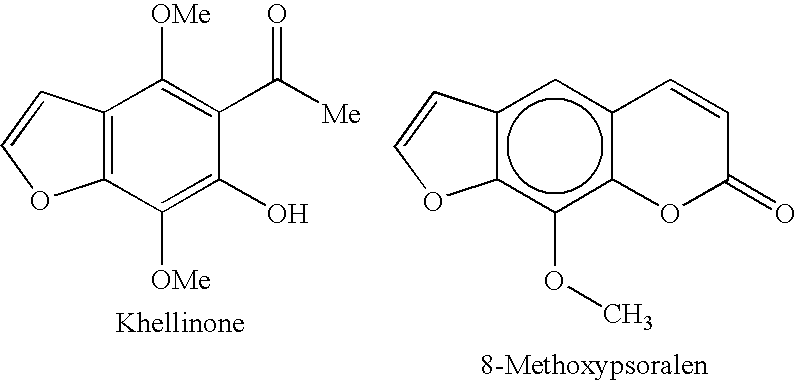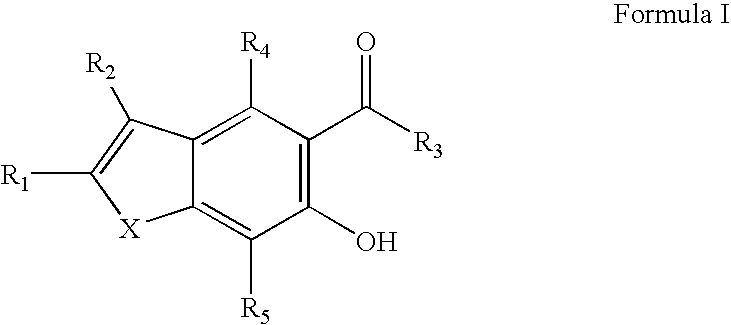Potassium channel blockers and uses thereof
a potassium channel blocker and potassium channel blocker technology, applied in the field of compounds, can solve the problems of affecting the normal functioning of the body, affecting the function of the body, so as to enhance the impulse propagation, improve the disability, and enhance the expression
- Summary
- Abstract
- Description
- Claims
- Application Information
AI Technical Summary
Benefits of technology
Problems solved by technology
Method used
Image
Examples
example 98
[0248]To a solution of 96 (140 mg, 0.42 mmol) in dichloromethane (3 mL) was added 35 (102 mg, 0.42 mmol) and triphenylphosphine (120 mg, 0.46 mmol) and the reaction mixture was cooled to 0° C. DEAD (72 μL, 0.46 mmol) was added and the reaction mixture was stirred at 0° C. for 10 min then at rt for 16 h. The reaction mixture was concentrated in vacuo. Purification by flash chromatography, eluting with ethyl acetate / petroleum ether (1:2), afforded a mixture of 97 and triphenylphosphine oxide, which was dissolved in refluxing ethanol (5 mL) and treated with 3M NaOH (5 mL). The reaction mixture was stirred at 90° C. for 2 h then concentrated in vacuo to one third of the original volume and then acidified to pH2 by Universal indicator with 2M HCl. The acidified reaction mixture was extracted with ethyl acetate (twice) and the pooled organics were washed with brine, dried (MgSO4) and concentrated in vacuo. Purification by flash chromatography, eluting with ethyl acetate / petroleum ether (1...
PUM
| Property | Measurement | Unit |
|---|---|---|
| particle size | aaaaa | aaaaa |
| temperature | aaaaa | aaaaa |
| temperature | aaaaa | aaaaa |
Abstract
Description
Claims
Application Information
 Login to View More
Login to View More - R&D
- Intellectual Property
- Life Sciences
- Materials
- Tech Scout
- Unparalleled Data Quality
- Higher Quality Content
- 60% Fewer Hallucinations
Browse by: Latest US Patents, China's latest patents, Technical Efficacy Thesaurus, Application Domain, Technology Topic, Popular Technical Reports.
© 2025 PatSnap. All rights reserved.Legal|Privacy policy|Modern Slavery Act Transparency Statement|Sitemap|About US| Contact US: help@patsnap.com



